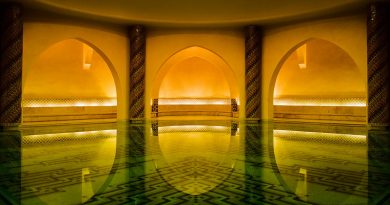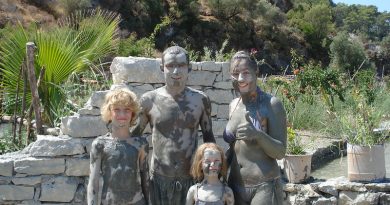Great Artists- Mark Rothko
Mark Rothko was an American abstract impressionist like Jackson Pollock and regarded pop artists like Andy Warhol as “charlatans and young opportunists”
Rothko, a Russian Jew, was born in Latvia in 1903 as Markus Yakovlevich Rotkovich, and in 1913 moved to Portland, Oregon with his parents. He was 14 before he learnt English, his 4th language. He committed suicide in New York in 1970.
Rothko abbreviated his name just before the outbreak of World War 2 fearing a return of the anti-Semitism in America that had forced his parents to leave Latvia, which was then part of the Russian Empire.
Many of the “multiforms” and early signature paintings are composed of bright, vibrant colours, particularly reds and yellows, expressing energy and ecstasy. By the mid-1950s, however, close to a decade after the completion of the first “multiforms,” Rothko began to employ dark blues and greens; for many critics of his work this shift in colours was representative of a growing darkness within Rothko’s personal life.
Rothko‘s method was to apply a thin layer of binder mixed with pigment directly onto uncoated and untreated canvas and to paint significantly thinned oils directly onto this layer, creating a dense mixture of overlapping colours and shapes. His brushstrokes were fast and light, a method he would continue to use until his death. His increasing adeptness at this method is apparent in the paintings completed for the Rothko Chapel. With an absence of figurative representation, what drama there is to be found in a late Rothko is in the contrast of colours, radiating against one another. His paintings can then be likened to a sort of fugue-like arrangement: each variation counterpoised against one another, yet all existing within one architectonic structure.
Rothko used several original techniques that he tried to keep secret even from his assistants. Electron microscopy and ultraviolet analysis conducted by the MOLAB showed that he employed natural substances such as egg and glue, as well as artificial materials including acrylic resins, phenol formaldehyde, modified alkyd, and others. One of his objectives was to make the various layers of the painting dry quickly, without mixing of colours, so that that he could soon create new layers on top of the earlier ones.
On February 25, 1970, Oliver Steindecker, Rothko’s assistant, found the artist in his kitchen, lying dead on the floor in front of the sink, covered in blood. He had sliced his arms with a razor found lying at his side. The autopsy revealed that he had also overdosed on anti-depressants. He was just 66 years old.
Destination – United States of America




